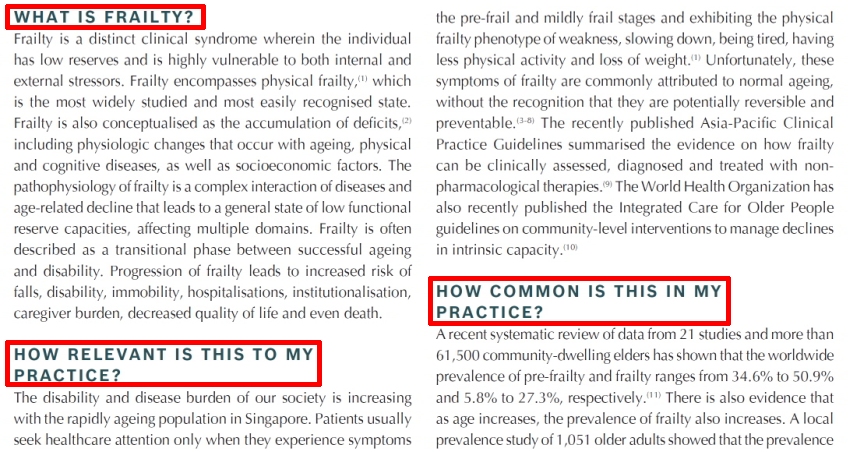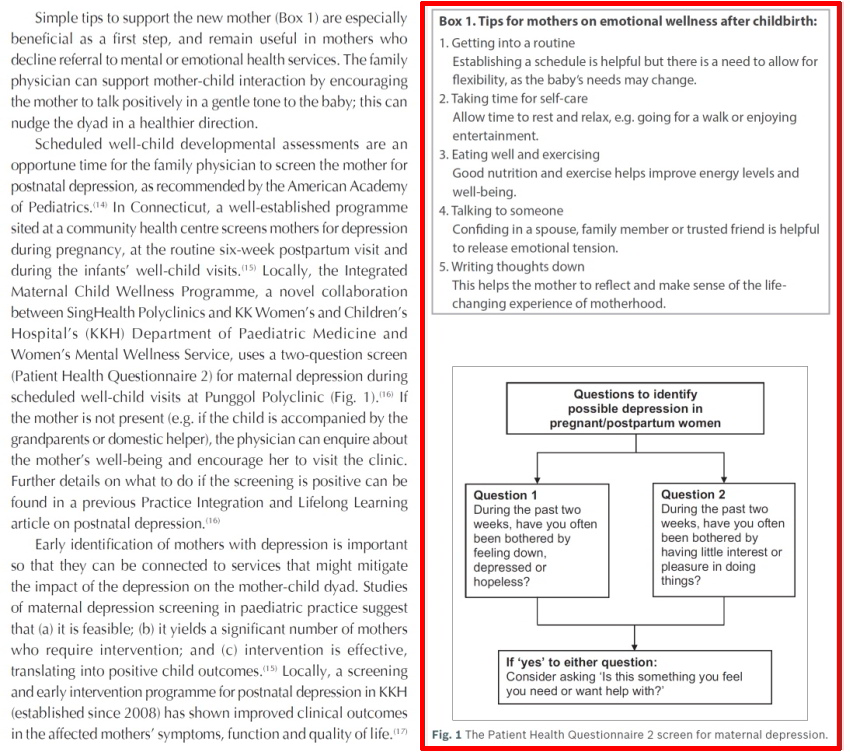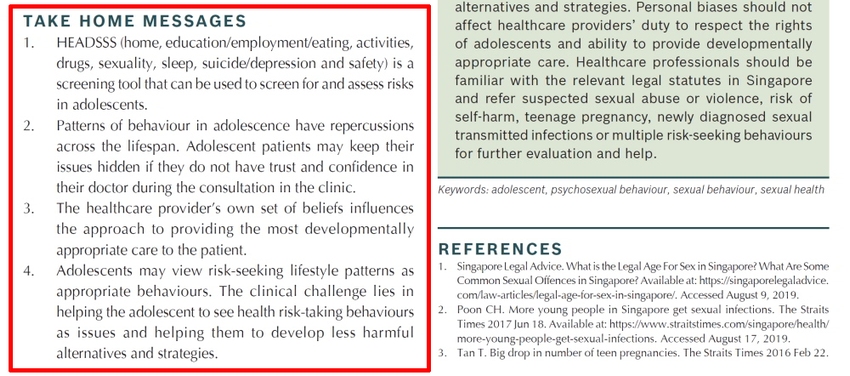This guide is a brief overview of the Practice Integration & Lifelong Learning (PILL) series for authors and reviewers who are new to the series.
A PILL article is a short, instructive case study (five-minute read) that aims to educate general practitioners in Singapore. Writing teams should comprise at least 1 family physician based in Singapore and relevant specialists/nurse practitioners/allied health professionals. There should be no more than 4 authors.
Please refer to our list of published PILL articles to ensure that your topic of interest has not been covered.
Note: As of May 2020, PILL articles no longer have abstracts. However, please include an abstract in your submission for review purposes.
Formatting your article
- Begin with a Case Vignette describing a typical primary care consultation. The story presents the scenario and context, introducing clinical questions relevant to the article.
Example case vignette
- Have a brief introduction, then explain how common the topic/condition is and how important it is to primary care. Possible headings include “What is ___?”, “How relevant is this to my practice?”, “How common is this in my practice?”, “What can I do in my practice?” and “When should I refer to a specialist?”
• “What is ___?” The key term or disease is described simply in two to three sentences, often in lay language if possible, and should not be a detailed definition or extensive elaboration.
• “How relevant is this to my practice?” This is where we describe the gravity of the problem and the impact of changing or updating the required practices.
• “How common is this in my practice?” Here, local prevalence or reported cases are shared.
• “What can I do in my practice?” This is where we elaborate on the key clinical points. Citations supporting the recommended practices or updates are necessary.
• “When should I refer to a specialist?” List red flags and referral criteria.
Example headings
- Boxes, tables, figures and photographs can be used to summarise and illustrate information (up to a maximum of 5 boxes/tables/figures/photos). Each box/table/figure should have a caption.
Example box and figure
- Key points of the article are repeated in Take Home Messages (3–8 points) to summarise good practices.
Example take home messages
- The Closing Vignette shows a successful clinical outcomes after 2–3 learning points from the article are implemented.
Example closing vignette
- There should be no more than 15 References.
- Important learning points from the article are repeated in 20 True/False CME questions.
Example CME questions








